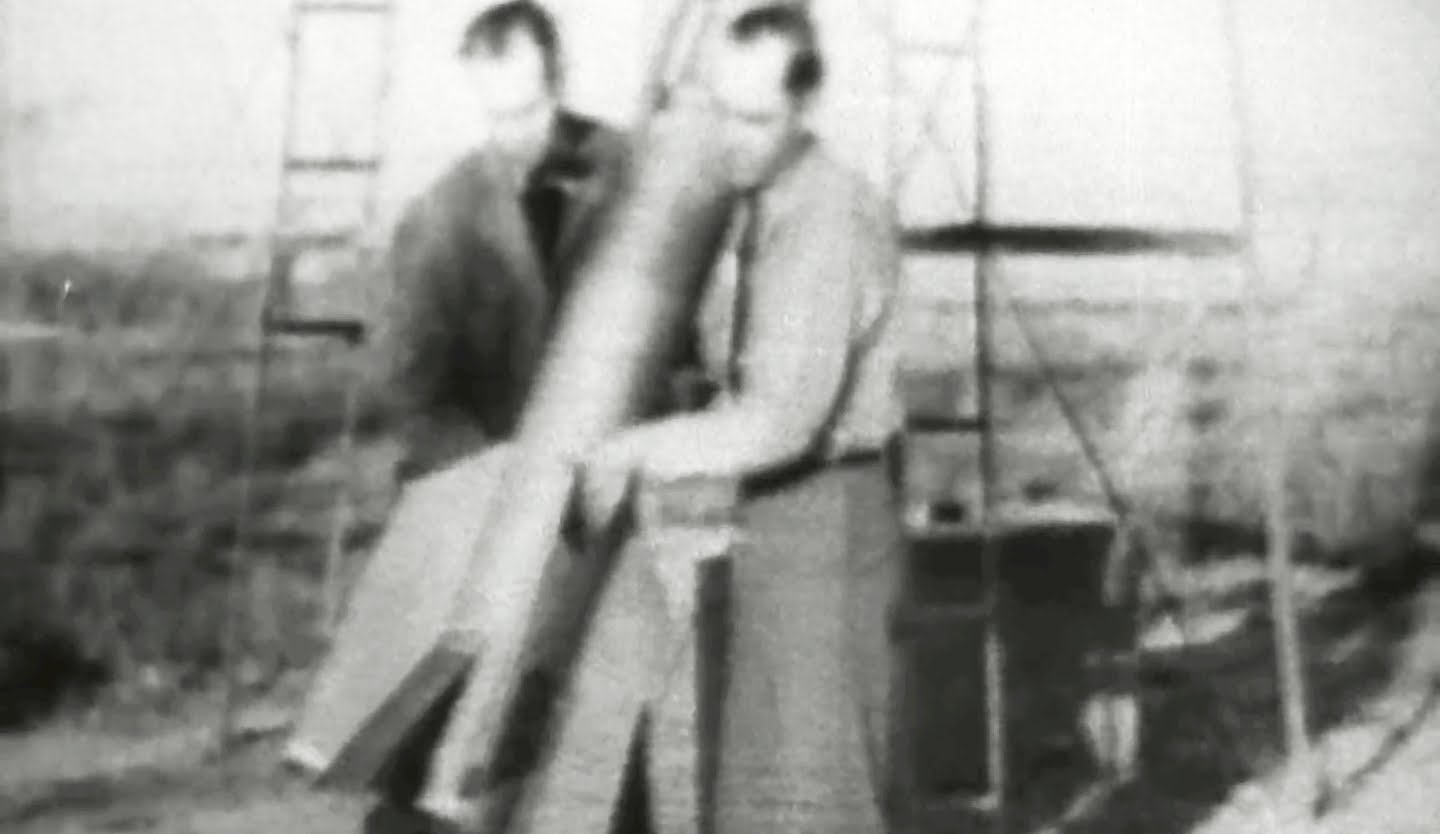more at:
‘The dream of Dr. Robert Goddard, the father of rocketry, is explored and examined through reminiscences of Mrs. Esther Goddard. Included in the film are historic scenes of Dr. Goddard’s early experiments and the personal commentary of Mrs. Goddard.’ This video was made from a kinescope (a film of a TV program made by pointing the movie camera at a TV screen), so the quality leaves something to be desired.
Public domain film from the US National Archives, slightly cropped to remove uneven edges, with the aspect ratio corrected, and mild video noise reduction applied.
The soundtrack was also processed with volume normalization, noise reduction, clipping reduction, and/or equalization (the resulting sound, though not perfect, is far less noisy than the original).
Robert Hutchings Goddard (October 5, 1882 – August 10, 1945) was an American engineer, professor, physicist, and inventor who is credited with creating and building the world’s first liquid-fueled rocket, which he successfully launched on March 16, 1926. Goddard and his team launched 34 rockets between 1926 and 1941, achieving altitudes as high as 2.6 km (1.6 mi) and speeds as high as 885 km/h (550 mph).
Goddard’s work as both theorist and engineer anticipated many of the developments that were to make spaceflight possible. He has been called the man who ushered in the Space Age. Two of Goddard’s 214 patented inventions — a multi-stage rocket (1914), and a liquid-fuel rocket (1914) — were important milestones toward spaceflight. His 1919 monograph A Method of Reaching Extreme Altitudes is considered one of the classic texts of 20th-century rocket science. Goddard successfully applied three-axis control, gyroscopes and steerable thrust to rockets, to effectively control their flight.
Although his work in the field was revolutionary, Goddard received very little public support for his research and development work. The press sometimes ridiculed his theories of spaceflight. As a result, he became protective of his privacy and his work. Years after his death, at the dawn of the Space Age, he came to be recognized as the founding father of modern rocketry. He not only recognized the potential of rockets for atmospheric research, ballistic missiles and space travel but was the first to scientifically study, design and construct the rockets needed to implement those ideas…
In late 1919, the Smithsonian published Goddard’s groundbreaking work, A Method of Reaching Extreme Altitudes. The report describes Goddard’s mathematical theories of rocket flight, his experiments with solid-fuel rockets, and the possibilities he saw of exploring the Earth’s atmosphere and beyond. Along with Konstantin Tsiolkovsky’s earlier work, The Exploration of Cosmic Space by Means of Reaction Devices. 1903.(which was not widely disseminated), Goddard’s little book is regarded as one of the pioneering works of the science of rocketry, and 1750 copies were distributed worldwide…
Goddard launched the first liquid-fueled (gasoline and liquid oxygen) rocket on March 16, 1926, in Auburn, Massachusetts. Present at the launch were his crew chief, Henry Sachs, Esther Goddard, and Percy Roope, who was Clark’s assistant professor in the physics department…
After a launch of one of Goddard’s rockets in July 1929 again gained the attention of the newspapers, Charles Lindbergh learned of his work in a New York Times article… he phoned Goddard in November 1929. Professor Goddard met the aviator soon after, in his office at Clark University. Upon meeting Goddard, Lindbergh was immediately impressed by his research…
…Lindbergh discussed finding additional financing for Goddard’s work, and put his famous name to work for Goddard…
In the spring of 1930, Lindbergh finally found an ally in the Guggenheim family. Financier Daniel Guggenheim agreed to fund Goddard’s research over the next four years for a total of $100,000 (~$1.7 million today). The Guggenheim family, especially Harry Guggenheim, would continue to support Goddard’s work in the years to come. The Goddards soon moved to Roswell, New Mexico.
Because of the military potential of the rocket, Goddard, Lindbergh, Harry Guggenheim, the Smithsonian Institution and others tried in 1940, before the U.S. entered World War II, to convince the Army and Navy of its value. Goddard’s services were offered, but there was no interest, initially. Two young, imaginative officers eventually got the services to attempt to contract with Goddard just prior to the war. The Navy beat the Army to the punch and secured his services to build liquid-fueled rockets for jet-assisted take-off (JATO) of aircraft…

